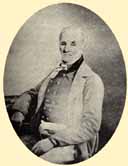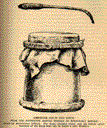

 |
 |
A Canoe Voyage up the Minnay Sotorby George William Featherstonhaugh 1835 |
 |
 |
... Resuming our voyage, we made ten miles more by noon, to the reach which leads to Pawmaygun, an Ojibway word for Wolf River, about half-way down the lake, where upper Fox River comes into it. Immense quantities of Zizania aquatica, or wild rice, were growing here, which the French call folle avoine. The Indians who frequent the localities which produce this grain are called Menominies, or "Wild Rice-eaters," a tribe whose language appears to have an affinity with that of the Miamis and other Illinois tribes. The Canadians, when speaking of these Indians, call them Les Folles. At 1 P. M. we landed for the men to dine, opposite to the portage of the Fond du Lac, where there is an Indian mound, and proceeded as soon as that ceremony was over. Lake Menominey is a small expansion of the river, about a mile in breadth, on the borders of which great quantities of the wild rice were growing: it terminated in a serpentine channel, running between lofty plants of zizania, 10 feet high, bearing a great crop of seed, not yet quite ripe. |
 Wolf River |
|
After paddling a short distance, we came to Butte des Morts, an eminence without any trees upon it. The stream here is so narrow as to bring the banks within rifle-shot. ... |
 Buttes des Mortes Treaty Grounds 1827 |
|
|
As we passed on from this place, we met several canoes, with Menominey Indians in them, all the men having their faces entirely blackened over with charcoal, which is their mourning for the death of a relative. They would not have been ill-placed in "Dante's Inferno." Where Wolf River comes into upper Fox River, there was a very broad area of zizania. Just beyond the junction we had a very tight canoe race, with a canoe containing three Menominies and two of their squaws. They paddled with all their might for some time, both men and women; but after a protracted struggle my men left them behind, inspirited by one of their most lively chansons, at quick time with their paddles. Our men having shown the Indians they could beat them, let them come up with us again, and we got into conversation with them. The men had very good teeth, and the women wore their coarse black hair in long, thick queues, such as some sailors were formerly seen to have, only that these were wound around with strings of white beads. |
 Menomonee Medicine Drum & Stick |